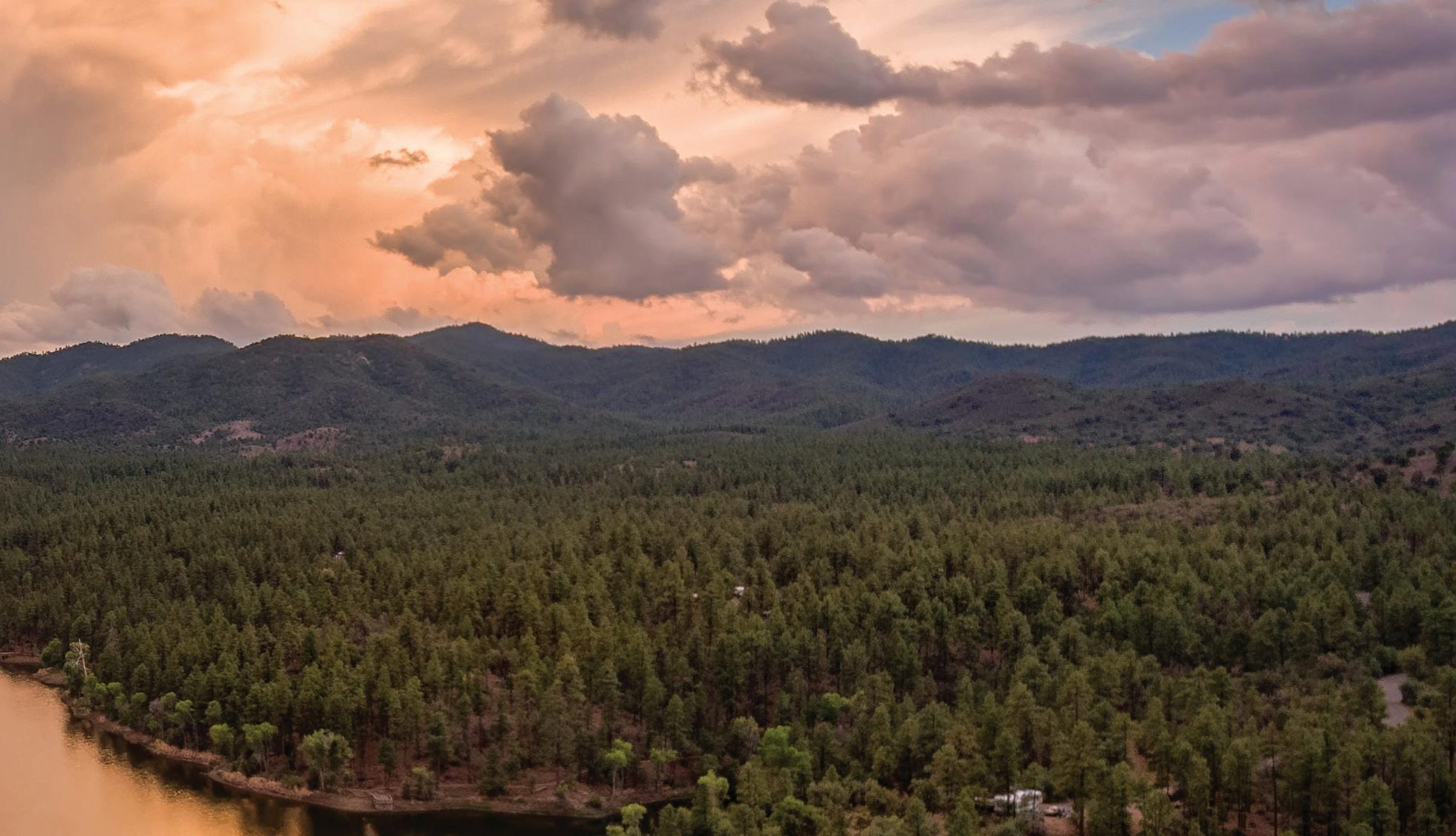
2 minute read
A Breath of Fresh Air
By Angie Johnson-Schmit
The Air is Better Up Here.
Northern and Central Arizona have been known for great air quality since the 1800s. It’s no secret that the higher elevation, low humidity, and vast swaths of ponderosa pine forests are part of that excellent air quality. As recently as 2015, the American Lung Association named Prescott, AZ as having the best air quality in the country, with Flagstaff, AZ rounding out the top five. Air quality is intertwined with the landscape, climate, and water. There is a near ideal balance of these elements in the region.
Since the onset of tuberculosis (TB) in the late 19th century, people traveled to Prescott in an effort to manage the disease. Once the site of sanitoriums for those dealing with consumption, there are several TB cottages still standing in town. Perhaps Prescott’s most famous TB asylum seeker was professional gambler, dentist, and gunfighter, John Henry “Doc” Holliday. After contracting the disease, he traveled west, eventually landing in Arizona. While his time in Prescott was more about card playing than recovery, he was likely familiar with the town’s reputation as a good place for those suffering with TB.
Part of what makes air quality in the region so good is due in large measure to the forests. The Prescott National Forest is home to both evergreens like ponderosa pine and Douglas-fir trees, and deciduous oak trees.

Photocredit: Michael Wilson, Lynx Lake
The forest’s 1.25 million acres stretch across north central Arizona, running from north of Prescott to south of Crown King. Coconino County, which includes Flagstaff and Sedona, encompasses 1.8 million acres of wilderness and is home to the largest stand of ponderosa pines in the world.
Trees play a major role in air quality, with the forests of the world handling just under a third of global emissions each year. Besides generating oxygen, trees are also able to absorb particles and pollutants. They remove carbon dioxide (CO2) and nitrogen dioxide (NO2), serving as a highly efficient, completely natural air filter and purifier. Trees are also very effective as physical barriers to particulate matter (PM) like soot and vehicle exhaust that can cause heart and lung disease. Many smaller particulates are absorbed directly by the trees, removing them from the air around them.
There is nowhere in the world with perfect air quality, but some of the best can be found in Central and Northern Arizona. Combined with four mild seasons that the Prescott and Prescott Valley areas enjoy, the immense stretches of national forest land serve to keep the air quality high. The next time you’re taking a walk or hike among the tall pines, remember that the trees also serve the practical purpose of keeping the air around you fresh and clean.










